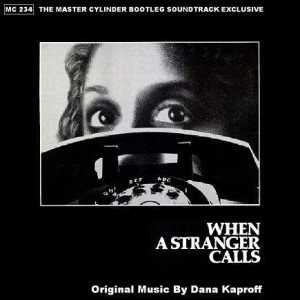 Films focusing on sudden “home invasions” exploit our fears that arbitrary violence can happen to good, innocent people, and that a locked door is no guarantee of safety.
Films focusing on sudden “home invasions” exploit our fears that arbitrary violence can happen to good, innocent people, and that a locked door is no guarantee of safety.
These films push the genre of horror in a different direction – without gratuitous bloodshed, hot chicks with fake boobs, or nonsensical plot twists – to creep out viewers by staging all the action in the claustrophobic environment of their own home.
Here are just five skin-crawling examples of “home invasion” horror:
The Strangers – 2008
A young couple (Liv Tyler and Scott Speedman) are staying in an isolated vacation home after a friend’s wedding. At first they welcome the seclusion, both agreeing that some “alone time” together is what they both deserve. James had proposed to Kristen earlier in the evening but she’d declined the offer.
They agree to spend one last night together before separating, not anticipating of course the fact that they would be spending the night fending for their lives. When the killers confess they targeting the couple simply “because they were home,” it leaves viewers themselves feeling vulnerable and open to random acts of violence.
Eerie and original, The Strangers makes a good case for both home security systems and gated resort communities. A sequel is reportedly in the works as well.
Them (Ils, French) – 2006
This time in Romania, a young French couple are targeted in their country house by a group of masked intruders. The film builds tension with tiny details; what it lacks in violence and gore it makes up for in heart-pounding suspense.
Shot on location in Bucharest and rural Romania, the setting only adds to the chilling drama. In the beginning of the film, a mother and her daughter drive along a deserted strip of roadway. They both meet untimely ends at the hands of mysterious attackers.
As the rest of the film unfolds, we meet Clementine and Lucas, the two French lovers, and hold our breath as they try to avoid the same fate as the motorists. Despite the fact that critics have accused Them of playing up racist French attitudes towards new-to-the-EU Romanian citizenry, the film still stands as a remarkable example of the psychological horror genre.
When a Stranger Calls – 1979
If horror films have taught us anything, it’s that being a babysitter is a surprisingly dangerous business. When a Stranger Calls propels the “babysitter” cliche, but also incorporates aspects of a thriller/action film.
When the main character, Jill Johnson, is at one of her babysitting jobs after school, she begins to receive suspicious phone calls from a stranger asking her if she’s “checked on the children.” Jill brushes off the phone calls initially but quickly turns to the police for help.
When they arrive she learns that the children she was babysitting were killed hours earlier by a madman hiding inside the house. Even in our current age of automated locks security cameras, and wireless home security systems, this film is guaranteed to sufficiently scare you.
Are You in the House Alone? – 1978
Much-discussed at the time of it’s release in the late seventies, the film centers around 16 year-old “Gail”, a young woman with a sadistic secret admirer. But before it made it’s way into the pantheon of made-for-TV thrillers, Are You in the House Alonewas a young adult novel by Richard Peck that challenged narrative conventions by discussing the aftermath of rape.
Written in a time before caller ID, Gail’s stalker first plagues her with phantom phone calls. But as the plot progresses, her stalker becomes more insistent, leaving notes in her locker at school. When she discovers his identity, and is later attacked, her assaulter’s status as the “big man on campus” largely protects him from the law.
Featuring an appearance by young Dennis Quaid, the film manages to accurately portray teenage characters while braving the controversial waters of rape and sexual assault.
Funny Games – 1997 (or the 2007 shot-for-shot remake)
Without employing any of the typical “horror” tropes, Funny Games manages to make viewers squirm in their seats in a relentless, tortuous way. The film follows Peter and Paul, two young men who take a vacationing German family hostage for their own perverse pleasure.
Some saw the film as a statement on the gratuitous violence allowed on television, as the two male leads often “break the fourth wall” and seemingly nod to as audience who has paid to be entertained by wanton brutality.
As the film progresses, the two men engage the family in an increasingly ruthless series of “games” in exchange for their lives. The pace of the film, combined with the psychotic behavior of the two young perpetrators, will surely test the limits of your own control. The 2007 remake is less painful than the original, which still leaves a mark even after repeat viewings.